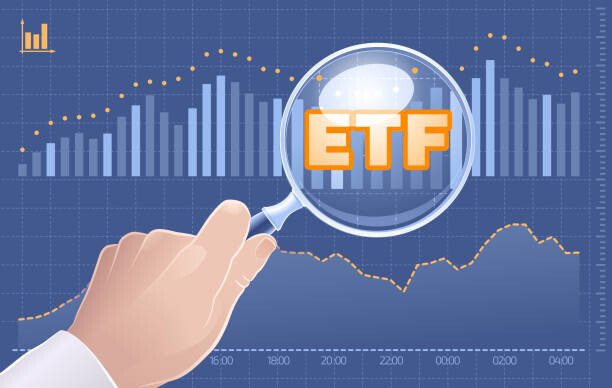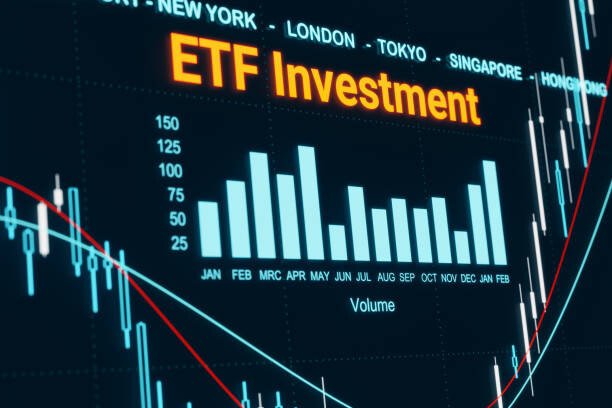Understanding ETFs: An Introduction
Exchange-traded funds (ETFs) have become increasingly popular among investors due to their flexibility, cost-effectiveness, and diverse investment opportunities. Essentially, an ETF is a type of investment fund that is traded on stock exchanges, similar to individual stocks. Unlike mutual funds, which are bought and sold directly through the fund company at the end of the trading day, ETFs can be traded throughout the trading day at market-determined prices.
ETFs are composed of a collection of assets, such as stocks, bonds, commodities, or a mix of various asset types, mirroring an underlying index or sector. This structure allows investors to gain exposure to a broad range of securities with a single transaction. The primary difference between ETFs and mutual funds lies in their trading flexibility and pricing mechanisms. Mutual funds are priced once daily, based on the net asset value (NAV), while ETFs can be bought and sold at any time during market hours at fluctuating prices.
Various types of ETFs are available to cater to different investment strategies and preferences. Equity ETFs, for example, are designed to track specific stock indices like the S&P 500 or NASDAQ-100, providing investors with a diversified exposure to a basket of stocks. Bond ETFs focus on fixed-income securities, such as government or corporate bonds, offering a way to invest in bonds without buying them individually. Commodity ETFs invest in physical commodities like gold, oil, or agricultural products, allowing investors to gain exposure to commodity price movements without directly owning the underlying assets. Sector and industry ETFs target specific sectors or industries, such as technology, healthcare, or energy, enabling investors to focus on particular areas of the market.
Understanding the basics of ETFs is crucial before delving into more complex investment considerations. By grasping how ETFs operate, their differences from mutual funds, and the variety of available types, investors can make more informed decisions and better align their investment choices with their financial goals.

Assessing Your Investment Goals and Risk Tolerance
Determining whether Exchange-Traded Funds (ETFs) are a suitable investment option for you begins with a thorough assessment of your investment goals and risk tolerance. Clearly defining your financial objectives is the cornerstone of any successful investment strategy. Whether you are planning for retirement, saving for education, or aiming for wealth accumulation, understanding your end goals will help you select the right ETFs that align with your aspirations.
Retirement planning often requires a long-term investment horizon, where investors seek growth over several decades. In this scenario, ETFs that track broad market indices or sectors with growth potential may be more suitable. On the other hand, if your goal is to save for a child’s education within a shorter timeframe, you might prefer ETFs that offer stability and lower volatility, such as those focused on bonds or dividend-paying stocks. Wealth accumulation often involves a mix of growth and income strategies, where a diversified portfolio of ETFs can provide both capital appreciation and regular income.
Understanding your risk tolerance is equally crucial. Different ETFs carry varying levels of risk, influenced by the underlying assets they track. For instance, ETFs that invest in emerging markets or technology sectors might offer higher returns but come with increased volatility. Conversely, ETFs that focus on government bonds or blue-chip stocks tend to be more stable but may offer lower returns. Assessing your comfort with risk can help you choose ETFs that match your personal risk preferences and financial stability.
Several tools and methods can assist in evaluating your risk tolerance. Online risk assessment questionnaires provided by financial institutions can offer insights into your risk profile. Additionally, consulting with a financial advisor can provide personalized guidance tailored to your specific situation. By combining a clear understanding of your investment goals with a realistic assessment of your risk tolerance, you can make informed decisions about whether ETFs are the right choice for you.
Analyzing ETF Performance and Costs
When evaluating whether Exchange Traded Funds (ETFs) are suitable for your investment portfolio, a thorough analysis of their performance and associated costs is imperative. Understanding key performance metrics such as historical returns, expense ratios, and tracking errors can significantly influence your investment decisions.
Historical returns provide insights into how well an ETF has performed over time. By examining the fund’s performance across various market conditions, investors can gauge its potential for future growth. However, it’s crucial to remember that past performance is not indicative of future results. Diversification and market trends can impact an ETF’s future returns.
Expense ratios are another critical factor to consider. This ratio represents the annual fees expressed as a percentage of the fund’s average assets under management. Lower expense ratios generally result in higher net returns over time. For example, an ETF with an expense ratio of 0.10% will cost an investor $1 per $1,000 invested annually, which can significantly reduce the overall costs compared to mutual funds.
Tracking error measures the deviation of an ETF’s performance from its benchmark index. A lower tracking error indicates that the ETF closely mirrors the benchmark, providing a more accurate representation of the index’s performance. Investors should seek ETFs with minimal tracking errors to ensure they are getting the expected returns of the underlying index.
In addition to these metrics, management fees and trading costs also play a crucial role in determining an ETF’s cost efficiency. Management fees are the charges levied by the fund manager for managing the portfolio, while trading costs include brokerage fees and bid-ask spreads. Minimizing these expenses can enhance the overall returns of your investment.
Tax efficiency is another consideration. ETFs are generally more tax-efficient than mutual funds due to their unique structure, which allows for in-kind redemptions. This process reduces capital gains distributions and, consequently, the tax burden on investors.
To make informed investment decisions, investors should compare these performance metrics and costs across different ETFs. By doing so, they can identify the funds that align with their financial goals and risk tolerance, ultimately optimizing their investment portfolios.
Building a Diversified ETF Portfolio
Constructing a diversified ETF portfolio is a crucial step in minimizing risk while maximizing potential returns. Diversification involves spreading investments across various asset classes, sectors, and geographical regions to reduce exposure to any single asset’s volatility. By leveraging the inherent diversification of Exchange-Traded Funds (ETFs), investors can achieve a balanced investment approach tailored to their financial objectives and risk tolerance.
To start, it’s essential to identify your investment goals and determine your risk tolerance. Are you seeking long-term growth, income, or capital preservation? Understanding your objectives will guide your selection of ETFs. For instance, equity ETFs might be suitable for growth-focused investors, while bond ETFs can be more appropriate for those prioritizing income and stability.
Asset allocation is another fundamental principle in building a diversified ETF portfolio. A well-constructed portfolio typically includes a mix of asset classes such as equities, fixed income, commodities, and real estate. For example, a classic 60/40 portfolio might consist of 60% equities and 40% bonds. This balance can be adjusted based on your risk profile; more conservative investors might prefer a higher allocation to bonds, while aggressive investors might favor a larger equity component.
Regular rebalancing is vital to maintaining your desired asset allocation. Market fluctuations can cause shifts in your portfolio’s composition, potentially increasing risk. By periodically reviewing and adjusting your holdings, you can ensure your portfolio remains aligned with your investment strategy. This might involve selling overperforming assets and buying underperforming ones to restore the original allocation.
Consider real-life examples to illustrate effective portfolio-building techniques. For instance, an investor with a moderate risk tolerance might allocate 50% to broad-market equity ETFs, 30% to bond ETFs, 10% to international ETFs, and 10% to sector-specific ETFs like technology or healthcare. This diversified approach can help mitigate risk while positioning the portfolio for growth across various economic conditions.
In summary, building a diversified ETF portfolio requires careful planning and ongoing management. By understanding your goals, adhering to asset allocation principles, and regularly rebalancing, you can construct a robust portfolio that aligns with your financial aspirations and risk tolerance.
